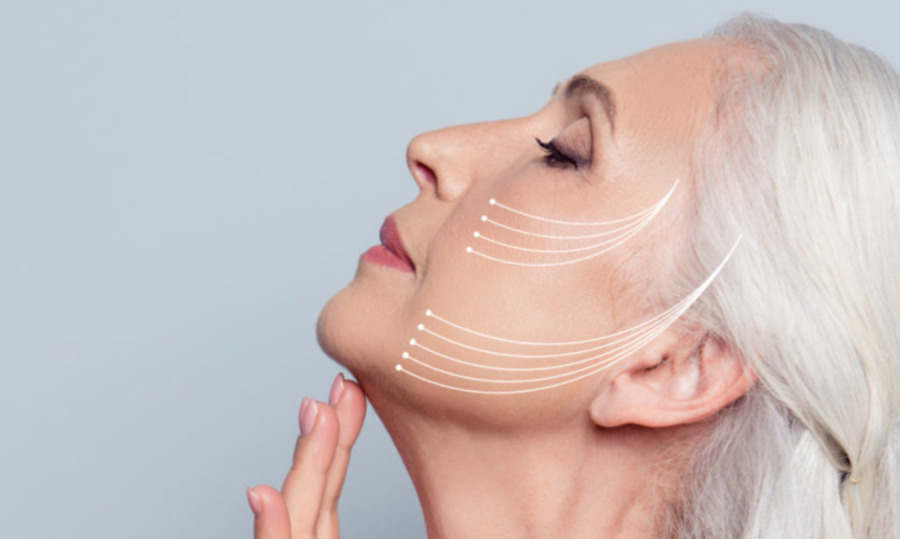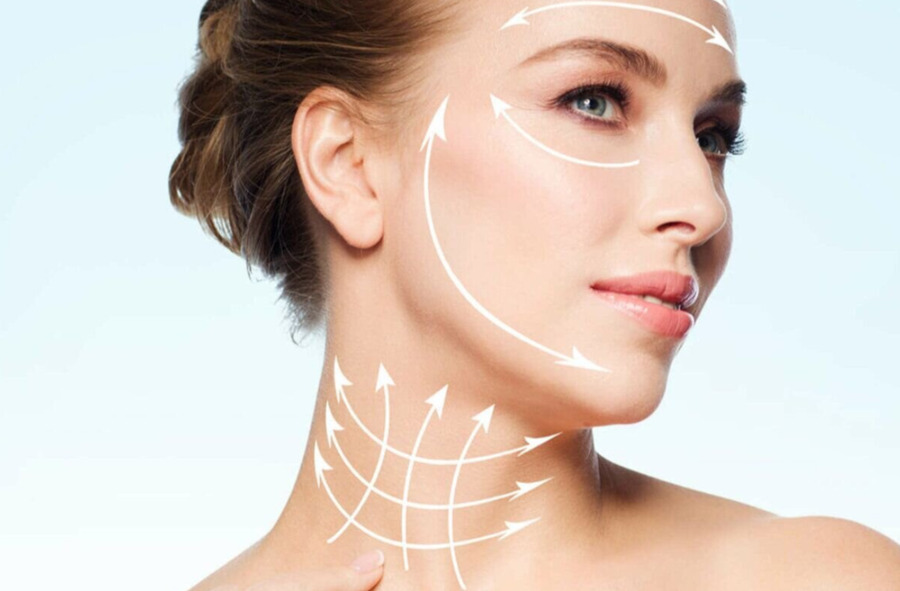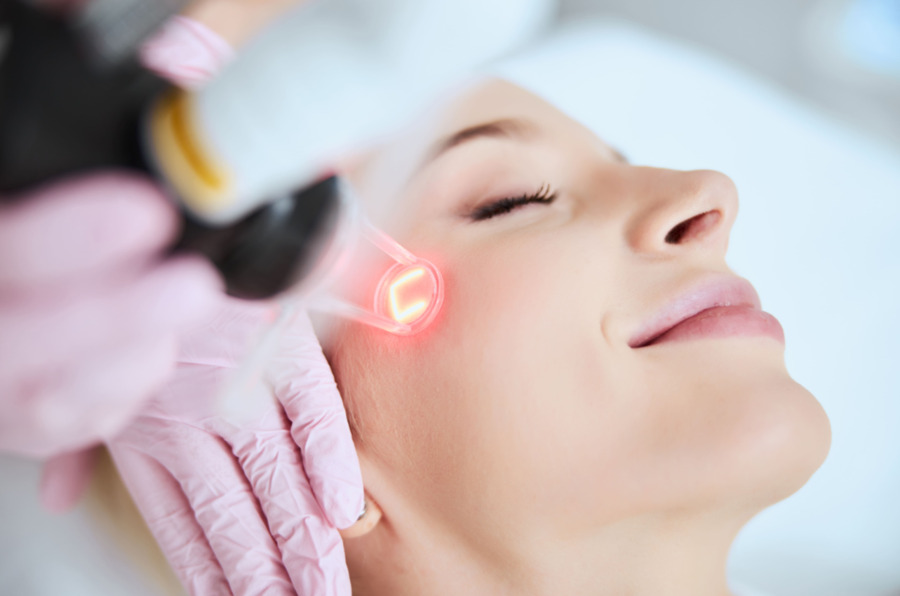Unlocking the Secrets of Non-Surgical Facial Rejuvenation

Non-surgical facial rejuvenation, a rapidly growing field in the cosmetic industry, offers a plethora of benefits. It encompasses a wide range of treatments that enhance facial appearance without the need for invasive surgical procedures. These advancements in technology and increased consumer awareness of non-invasive options have paved the way for this popular trend.
Non-surgical facial rejuvenation refers to treatments that aim to reduce signs of aging and improve skin texture, tone, and overall facial aesthetics using non-invasive or minimally invasive techniques. These methods include but are not limited to injectables such as Botox and dermal fillers, laser treatments, chemical peels, and microdermabrasion. The primary goal is to achieve a youthful and refreshed appearance without the scalpel and sutures associated with traditional surgery.
Page Contents
Popularity and Growth in the Cosmetic Industry
The demand for non-surgical treatments has surged in recent years, driven by several factors:
- Technological Advances: Innovations in technology have improved the effectiveness and safety of non-surgical treatments, making them a more attractive option for individuals looking to enhance their appearance.
- Media Influence: Social media and celebrity endorsements have significantly popularized these treatments, highlighting their benefits and accessibility.
- Demographic Trends: An aging population with a strong desire to maintain a youthful appearance contributes considerably to the growth of this sector.
Appeal Over Surgical Options
Non-surgical facial rejuvenation offers several advantages over traditional surgery, which have contributed to its popularity:
- Lower Risk: These treatments typically involve lower risk than surgical procedures. Complications are less common and less severe, making non-surgical options safer for a broader range of individuals, including those who may not be candidates for surgery due to health concerns.
- Minimal Downtime: One of the most significant advantages is the minimal to no downtime required. Many procedures can be performed during a short clinic visit, and patients can often return to their daily activities immediately, which is highly appealing for those with busy lifestyles.
- Cost-Effectiveness: Non-surgical treatments are generally more affordable than surgery. They often do not require anesthesia or prolonged hospital stays, reducing costs.
- Gradual and Subtle Results: Many people prefer non-surgical methods because they offer more subtle and gradual results, which can be adjusted over time to maintain the natural appearance.
Skin rejuvenation clinics play a crucial role in delivering these treatments. They offer a range of non-surgical solutions tailored to individual needs and are staffed by experienced professionals skilled in the latest techniques. These clinics provide a safe and professional environment for patients seeking facial rejuvenation, ensuring that treatments are administered with the highest standards of care.

Overview of Popular Treatments
Non-surgical facial rejuvenation encompasses a variety of techniques designed to enhance facial appearance without invasive surgery. Among the most popular treatments are Botox injections, dermal fillers, and laser therapy. These treatments are routinely performed in skin rejuvenation clinics and are highly favored for their efficacy and minimal downtime.
Botox
Science Behind Botox:
Botox is derived from botulinum toxin, a neurotoxic protein produced by the bacterium Clostridium botulinum. In cosmetic applications, Botox works by temporarily blocking nerve signals to muscles, causing a reduction in muscle activity. This relaxation of muscles leads to a decrease in the appearance of wrinkles associated with facial expressions. The effect is a smoother, more refreshed appearance.
Common Areas Treated with Botox:
- Forehead Lines: Horizontal lines on the forehead that become more prominent with age.
- Crow’s Feet: Fine lines that radiate from the corners of the eyes, typically visible when smiling or squinting.
- Frown Lines: Vertical lines between the eyebrows, often deepening with facial expressions like frowning.
Procedure:
The Botox procedure is quick and minimally invasive, typically completed within 10 to 15 minutes. The toxin is injected using a fine needle into specific muscles, with the number of injections depending on the area being treated. The process is relatively painless, with patients experiencing only a slight pinch during injection.
Duration of Effectiveness:
The effects of Botox typically last between 3 to 6 months. As muscle action gradually returns, the lines and wrinkles reappear and must be treated again. Regular treatments can lead to longer-lasting effects over time.
Potential Side Effects:
While Botox is generally safe, potential side effects include temporary bruising, swelling at the injection site, and rarely, a drooping eyelid or eyebrow if the toxin spreads from the injection site. Most side effects are mild and resolve quickly. Choosing a reputable skin rejuvenation clinic with experienced practitioners is crucial to minimizing risks.
Dermal Fillers
Dermal fillers are injectable treatments that enhance facial contours, add volume, smooth lines, and rejuvenate the skin without surgical procedures. Due to their effectiveness and immediate results, they are among the most popular cosmetic treatments offered at skin rejuvenation clinics.
Types of Dermal Fillers
Several types of dermal fillers are available, each suited for specific uses and effects:
- Hyaluronic Acid (HA):
- Properties: Hyaluronic acid is a naturally occurring substance in the skin that retains moisture and helps keep the skin hydrated and plump.
- Uses: HA fillers are commonly used to enhance lip volume, smooth out wrinkles and fine lines, and restore volume to the cheeks and under-eye areas.
- Brands: Popular brands include Juvederm, Restylane, and Teosyal.
- Calcium Hydroxylapatite (CaHA):
- Properties: CaHA is a mineral-like compound naturally found in human bones. In filler form, it is typically suspended in a gel that smooths out moderate-to-severe creases such as nasolabial folds, frown lines, and marionette lines.
- Uses: It also enhances facial contours and improves volume in the cheeks and other facial areas.
- Brand: Radiesse is a well-known CaHA filler.
- Poly-L-lactic Acid:
- Properties: This synthetic filler helps stimulate the body’s collagen production.
- Uses: Poly-L-lactic acid fillers are primarily used to treat deep facial wrinkles and increase volume where fat has been lost. They are considered “biostimulatory” fillers because they help the skin regenerate collagen.
- Brand: Sculptra is one of the primary brands used.
- Polymethylmethacrylate (PMMA):
- Properties: PMMA is a synthetic, biocompatible, semi-permanent filler.
- Uses: Best used to treat medium-to-deep wrinkles, folds, and furrows, particularly nasolabial folds. It can also be used to fill out pitted scars and to augment thin lips.
- Brand: Bellafill is a common PMMA filler.
Areas Typically Enhanced with Fillers
- Lips: Fillers can add volume, define the shape, and enhance the overall appearance of the lips.
- Cheeks: Used to restore lost volume due to aging or to create definitions.
- Nasolabial Folds: Fillers smooth out these folds, running from the sides of the nose to the corners of the mouth.
- Jawline: Injecting fillers along the jawline can help to create a more defined and youthful appearance.
Procedure and Duration
The procedure for applying dermal fillers is relatively straightforward:
- Consultation: Initial consultation to discuss goals and options.
- Preparation: The area to be treated is cleaned, and a topical anesthetic may be applied to minimize discomfort.
- Injection: The filler is injected into the specified areas using a fine needle or cannula. The process typically takes 15 to 60 minutes, depending on the areas treated.
- Immediate Aftercare: Minimal, with most patients able to resume normal activities immediately.
Fillers can last six months to over a year, depending on the type used, the area treated, and the patient’s metabolism. Polylactic acid fillers can last up to two years as they help stimulate the body’s collagen production.

Laser Therapy
Laser therapy is a versatile and effective cosmetic treatment that uses focused light to treat various skin conditions. It is a popular option at many skin rejuvenation clinics, providing solutions for skin resurfacing, pigmentation correction, and enhancement of skin elasticity. Understanding how laser therapy works, the different types available, and what to expect during and after treatment can help individuals make informed decisions about their skincare.
How Laser Therapy Works
Laser therapy emits a concentrated beam of light absorbed by specific targets (chromophores) in the skin. Depending on the type of laser, these targets could be pigment, blood vessels, or water in skin cells. The laser light is converted into heat energy, which damages the targeted cells while sparing surrounding tissues. This controlled damage breaks down unwanted pigmentation or stimulates natural healing processes, including new collagen formation.
Types of Lasers
- Ablative Lasers:
- Ablative lasers remove the outer layers of the skin (epidermis) and heat the underlying skin (dermis), which stimulates the growth of new collagen fibers. As the treated area heals, the new skin forms smoother and firmer. Common ablative lasers include the CO2 laser and the Erbium YAG laser.
- Uses: Ablative lasers are used for deeper skin resurfacing, reducing deeper wrinkles, scars, and other more significant skin irregularities.
- Non-Ablative Lasers:
- Non-ablative lasers do not remove skin layers; instead, they heat the skin underneath to promote collagen growth and cellular renewal without damaging the surface. They are less invasive than ablative lasers and require less downtime.
- Uses: These lasers are generally used for mild to moderate skin rejuvenation tasks, including treating fine lines, minor wrinkles, and pigmentation issues.
Uses of Laser Therapy
- Skin Resurfacing: Both ablative and non-ablative lasers can be used for skin resurfacing. Ablative lasers treat deep wrinkles and scars more dramatically, while non-ablative lasers are suited for less intensive rejuvenation.
- Treating Pigmentation: Lasers are particularly effective at targeting skin areas with excess pigment, such as age spots, sunspots, and melasma. The laser breaks down the pigment into smaller particles, which are then absorbed by the body.
- Promoting Collagen Production: Laser treatments heat the dermis and encourage the production of new collagen and elastin. This helps tighten loose skin and improve overall skin texture and firmness.
Procedure Specifics
- Pre-Treatment: Patients may need to avoid sun exposure, certain skincare products, and medications that can affect skin sensitivity for a few weeks before treatment.
- During Treatment: Protective eyewear is worn to safeguard the eyes from laser light. A topical anesthetic may be applied to reduce discomfort. The procedure time can vary from 15 minutes to over an hour, depending on the size of the area being treated.
- Post-Treatment Care: Immediate aftercare might involve applying the practitioner’s prescription of ice packs and moisturizers or other topical treatments.
Expected Outcomes and Recovery Time
- Recovery Time: For ablative laser treatments, recovery can take one to two weeks, during which the skin heals and regrows. Non-ablative laser treatments typically have minimal downtime, with most patients resuming normal activities within a day.
- Expected Outcomes: Improvements can be seen after the skin heals from ablative treatments or after several sessions of non-ablative treatments. Results include smoother, clearer, and tighter skin.
Possible Side Effects
- Side Effects: Common side effects include redness, swelling, and itching, which usually subside within a few days for non-ablative lasers and a few weeks for ablative lasers. More severe side effects can include scarring, changes in skin color, and infection, although these are rare when a qualified professional performs treatment at a reputable skin rejuvenation clinic.
Cost Considerations
Understanding the cost implications is essential for planning and decision-making when considering non-surgical facial rejuvenation treatments. Prices can vary widely based on several factors, including the type of treatment, the provider’s expertise, geographic location, and the patient’s specific needs and goals. Below is an overview of the cost ranges for Botox, dermal fillers, and laser therapy.
Botox
- Cost Range: In Dubai and other parts of the UAE, the cost of Botox can range from AED 350 to AED 1,500 per area treated. The total cost depends on the number of units used, which is influenced by the area of the face being treated and the desired effect.
- Factors Influencing Cost:
- Provider Expertise: More experienced clinicians typically charge higher fees due to their expertise.
- Treatment Complexity: Complex areas or those requiring a subtler effect might need a more precise and careful application, affecting the cost.
- Frequency of Treatment: Since Botox effects are temporary, requiring treatments every 3-6 months, this can be an ongoing cost consideration.
Dermal Fillers
- Cost Range: Dermal fillers are generally priced per syringe, with costs ranging from AED 1,500 to AED 3,000 per syringe. Depending on the treatment area and desired volume, multiple syringes may be needed.
- Factors Influencing Cost:
- Type of Filler: Different materials (e.g., hyaluronic acid vs. poly-L-lactic acid) can vary in cost due to their longevity and the effects they produce.
- Area Treated: Larger areas or those requiring deeper fill might require more product.
- Clinic Location: Clinics in upscale regions or those with high overhead costs may charge more.

Laser Therapy
- Cost Range: Laser treatments can vary widely, from AED 700 to AED 4,000 per session, depending on the type of laser and area treated.
- Factors Influencing Cost:
- Type of Laser: Ablative lasers, which require more downtime and are often more intense, can cost more than non-ablative lasers.
- Area of Treatment: Larger areas or those requiring multiple treatment sessions will increase the total cost.
- Treatment Goals: More comprehensive rejuvenation goals, such as addressing deep wrinkles or significant pigmentation issues, can require more sessions and different types of lasers, impacting the overall cost.
Conclusion
Understanding the nuances of each treatment, from the procedure specifics to the potential costs involved, is crucial for making informed decisions. Moreover, selecting the right provider—someone who is experienced and operates within a reputable skin rejuvenation clinic—is equally important to ensure safety and achieve the desired outcomes.
With the increasing demand for cosmetic enhancements, non-surgical techniques are advancing rapidly, offering safer, quicker, and more cost-effective solutions. We strongly advocate that those interested in facial rejuvenation seek guidance from qualified professionals. These experts can provide personalized advice and treatments tailored to individual needs, thereby enhancing the effectiveness of the treatments and ensuring a satisfying and rewarding journey towards a youthful, refreshed appearance.

